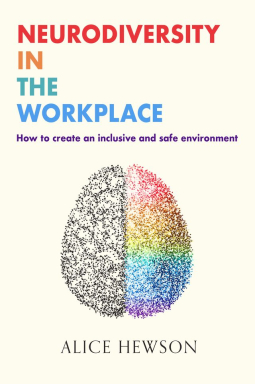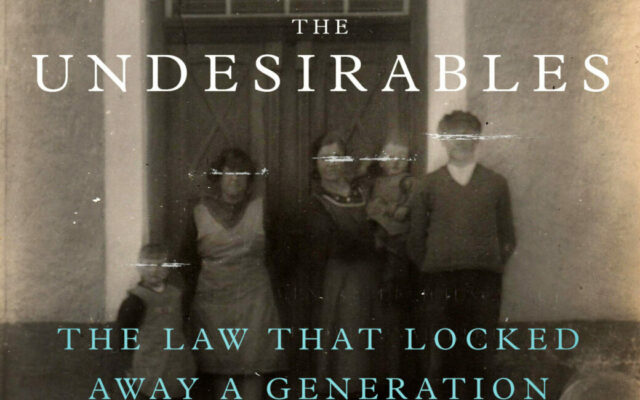Self injury and bereavement: the role of relationships in helping people deal with difficult feelings
David O’Driscoll reviews two books exploring these complex and disturbing subjects
Understanding and Working with People with Learning Disabilities who Self Injure
Edited by Pauline Heslop and Andrew Lovall
Jessica Kingsley, 2013
Supporting People with Intellectual Disabilities Experiencing Loss and Bereavement: Theory and Compassionate Practice
Edited by Sue Read
Jessica Kingsley, 2014
When I first started working as a psychodynamic psychotherapist in the National Health Service, one of my first patients was a woman with learning disabilities who was self-harming. She cut her hair with scissors, attacking it in an alarming manner, causing considerable unease and confusion to her support team. She had begun this behaviour after her father died.
After some discussion, it was established that she was not told about the death of her father until maybe only a week before the funeral. I also found out that her father was a hairdresser. Both aspects were key elements in her self-harm.
We were able, over the course of the psychotherapy, to think about the meaning of such an act and the dynamics behind it. It was also a lesson for me in how people in anguish use their body to communicate inner distress. And also – and this is an important point – that they can be helped by a psychological intervention.
For many practitioners working in learning disabilities, self–harm and loss and bereavement are complex, disturbing, and often upsetting subjects.
Two books from Jessica Kingsley explore in detail these two topics. The layout is similar. Both are essentially a collection of essays from a diverse group of practitioners and academics. Heslop and Lovall’s book runs to 13 chapters while Read’s goes to 18.
Read’s book is split into three sections; theoretical perspectives, contemporary practice issues, and specialist contexts and considerations. Heslop and Lovall’s book is split into two sections; ‘different approaches to understanding self-injury’ followed by ‘different approaches with working with people who self-injure.’ Each chapter has handy implications for practice at the end. This is a feature of all Jessica Kingsley books which I value.
Self injury
The self-injury collection is a valuable group of essays. The opening chapter by the editors on ‘dimensions of self–injury’ was a highpoint for me, describing the complications and many functions in self-harming; for example, “one function of self-injury may be the reduction of pain”; also, “self-injury might provide paradoxical respite from the distress experienced by being in physical pain” (p. 10). People with learning disabilities are particularly vulnerable to self-injury. Cutting is the most common form in up to 90 per cent of self injury cases according to one survey.
Historically, there have been only biological or behavioural approaches with a long history of the latter offered to this group; this includes some shocking examples used as a form of punishment. My clinical experience tells me there is often a link to loss, which is overlooked. Support workers often struggle to help or understand it; clearly, being told not to self-injure is unhelpful, nor are the various distraction techniques which are so common.
While this may be self-evident it does not, in my experience, stop professionals using these techniques. There is still a worrying emphasis on pharmaceutical interventions. The authors and writers in the Heslop and Lovall collection are focused on the need to find a way of understanding the behaviour as a communication. A number of the authors focus on the key being a link to developing relationship. I like Valerie Sinason’s ideas as self-harm as a form of ‘life-saving medication’ or ‘trauma re-enactment syndrome’.Several chapters explore the role of difference in self-harming; the chapter by Lovell on family voices was particularly moving.
Loss and bereavement
Loss is a subject many professionals in the learning disability community would claim they are familiar with. This means having an understanding of a model of grief highlighting denial, anger, sadness, guilt, and recovery. Sigmund Freud describes it as a job of work we need to pay attention to. Many professionals from specialist services may state it is nothing to be frightened of. And yet somehow I am not convinced.
I think they would help themselves by reading this collection and others, like Dr Noelle Blackman’s book (2003). Read has assembled an impressive range of authors from across the globe but it has very much a Staffordshire flavour due to her connection with the University there. In her introduction, Read makes the important point that “loss permeates throughout everyone’s lives but for some communities it may be harder to express feelings of loss in meaningful, socially acceptable ways and individuals may not be given the appropriate support they need at the time they need it the most.”
There is too much to discuss in this brief review but the highlights for me were the very practical approach by the advocacy group, ‘reach’, which many support services could benefit from reading. I also enjoyed reading about some new areas for me: supporting children and young people with a life limiting condition and spirituality and faith which often gets overlooked.
The chapter on complicated grief was also a highlight and its role in suffering for many people. “For people with learning disabilities, the impact of grief is poorly understood in general, and our understanding of the impact of complicated grief is developing slowly”. This chapter pointed to their vulnerability but also the importance of psychological intervention and training. “Professional carers are arguably not adequately prepared to identify a possible negative reaction to bereavement or to provide effective support”.
I would have liked some more examples of clinical work, as seen in the self-injury book, maybe including contributions from the creative therapists and their approach to loss.
Amateur listening
Although in both books there is some overlap in contributions, both are valuable contributions to the existing literature. Both emphasise the role of relationships in helping people deal with difficult feelings, even the role of amateur listening, often overlooked.
The National Health Service recently published its survey into staff attitudes about working. They were asked what areas they would like to see improved and the key one was training. There was a general view that the training offered was poor and that staff wanted more specialism training. I have written about this elsewhere, stressing my belief that loss and bereavement training should be compulsory (O’Driscoll, 2015).
Now, after reading this collection, I think the same should be said for understanding self-harm.
References
Blackman, N. (2003). Loss and Learning Disability. Wurth publishing
O’Driscoll, D. (2015) Nothing to be frightened of? Loss and learning disability. Learning Disability Today. January/February 2015
David O’Driscoll, Psychotherapist Loss and Bereavement, Specialist Learning Disability Services,
Hertfordshire Partnership University NHS Foundation Trust




